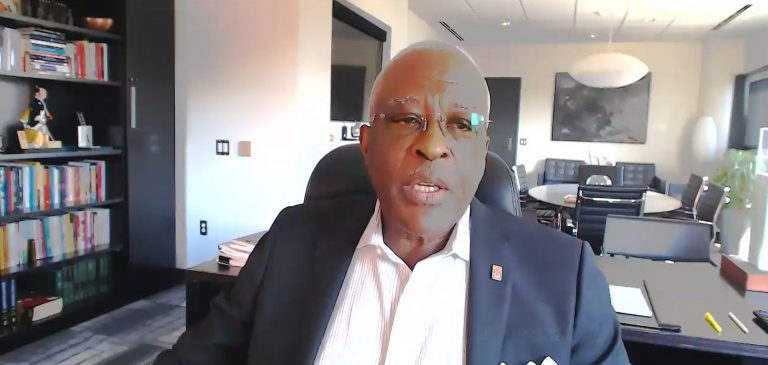URBANA – Researchers at the University of Illinois at Urbana-Champaign have created a saliva-based COVID-19 test.
During a webinar hosted Tuesday by U of I Chancellor Robert Jones and other university staff, Martin Burke, a U of I chemistry professor, announced that they had the capacity to test up to 10,000 people per day. He says the university repurposed a veterinary diagnostic lab “into a world class human COVID-19 testing facility.”
The U of I has yet to formally announce how it will reopen for the fall semester. A task force recently released a report outlining potential strategies for a return to campus this autumn. A group of campus faculty, however, released a statement late last month urging the university not to bring massive amounts of students to the campus, fearing it would lead to an outbreak of COVID-19 in central Illinois.
Universities and colleges across the country are tasked with figuring out how to deliver instruction and the traditional on-campus college experience while the COVID-19 pandemic continues to rage, and public health experts fear a resurgence of the virus come fall. Western Illinois University, for example, announced this week that it would open in late August with face-to-face instruction and social distancing measures.
Burke, the U of I professor, says the plan for the Urbana campus is to begin testing faculty and staff on campus next month, and then test thousands of students who return to campus for the fall semester. Traditional COVID-19 tests rely on a nasopharyngeal swab. But Burke says a recent study indicates that saliva may be more sensitive to COVID-19 testing than the nasal swab method. He says the saliva test developed by the university is scalable and not subject to supply chain bottlenecks that have limited access to nasal swab testing. Burke says researchers also created a COVID-19 antibody test which will be used “on a more targeted basis.”
“More than 51,500 students are coming into our community again. We imagine this will be just part of their orientation. So you get your housing information, your dining card, your ID card, and you also submit your saliva sample, just as part of that standard reentry into the community,” he says.
Staff and students will also be retested throughout the fall semester at about 20 testing sites scattered across the campus, Burke says. He says an algorithm will allow the university to conduct random testing weighing each student and staff member’s potential risk factors for contracting the virus.
“And the idea is just on your way to class or your way to work, you just pop in, you can submit your saliva sample, and then go on with your day,” he says.
William Sullivan, a landscape architecture professor, says the university has added COVID-19 capabilities to its app, which was initially launched last fall. Burke says the app will alert students and staff when they should get tested again.
Sullivan says the app is integrated with local healthcare agencies and students and staff can download their results directly from those providers while using the app, in addition receiving healthcare recommendations and the ability to connect with healthcare workers. He says members of the campus community have expressed concerns about privacy, data security and equity and access with regard to the app’s COVID-19 functions.
“First of all, users own their data. We never, never sell it or give it away. We’re not Facebook, we’re not Google. We’re not a private sector entity that seeks to monetize your data in order to make a profit. We’re the University of Illinois, and we’re going to use the data to enhance health and safety and functioning on campus,” Sullivan says.
He says the app providers users with numerous choices with regard to their data and privacy.
Users can also opt in to receive exposure notifications if they’ve been in close proximity to another app user who tested positive for the virus.
“How we do this is we identify how long and how close you are to other phones as a way to measure the duration of your contact and the extent to which you’ve had exposure to other folks,” Sullivan says. He added that the university also plans to employ five full-time contact tracers with the capacity to increase that number if necessary.
OSF HealthCare has partnered with the U of I to provide students and employees with individualized virtual healthcare, and access to in-home healthcare technology — if necessary — while they recuperate from COVID-19, according to John Vozenilek, the agency’s chief medical officer of innovation and digital health. He says the services will be provided free of charge through the state-funded Pandemic Health Worker Program.
The public is also invited to download and use the university’s app for exposure notifications, and “we anticipate that University-based testing will be available to individuals outside the University community through a healthcare partner,” Charlie Simpson, the university’s executive director of marketing and communications wrote in an email following the webinar.
(Champaign-Urbana residents also have access to free testing at the Market Place Shopping Center in Champaign.)
U of I Chancellor Robert Jones says it is crucial that the university resume in-person operations. But they can only do so once the state enters Phase 4 of Governor J.B. Pritzker’s Restore Illinois plan. The earliest that will happen is June 26.
“We believe very strongly that returning to face-to-face campus operation is absolutely critically important. But that has to be done in a way with the safety of our students at the forefront of every decision. And we have created the conditions for a safe return to campus operation,” Jones says.
Follow Lee Gaines on Twitter: @LeeVGaines

